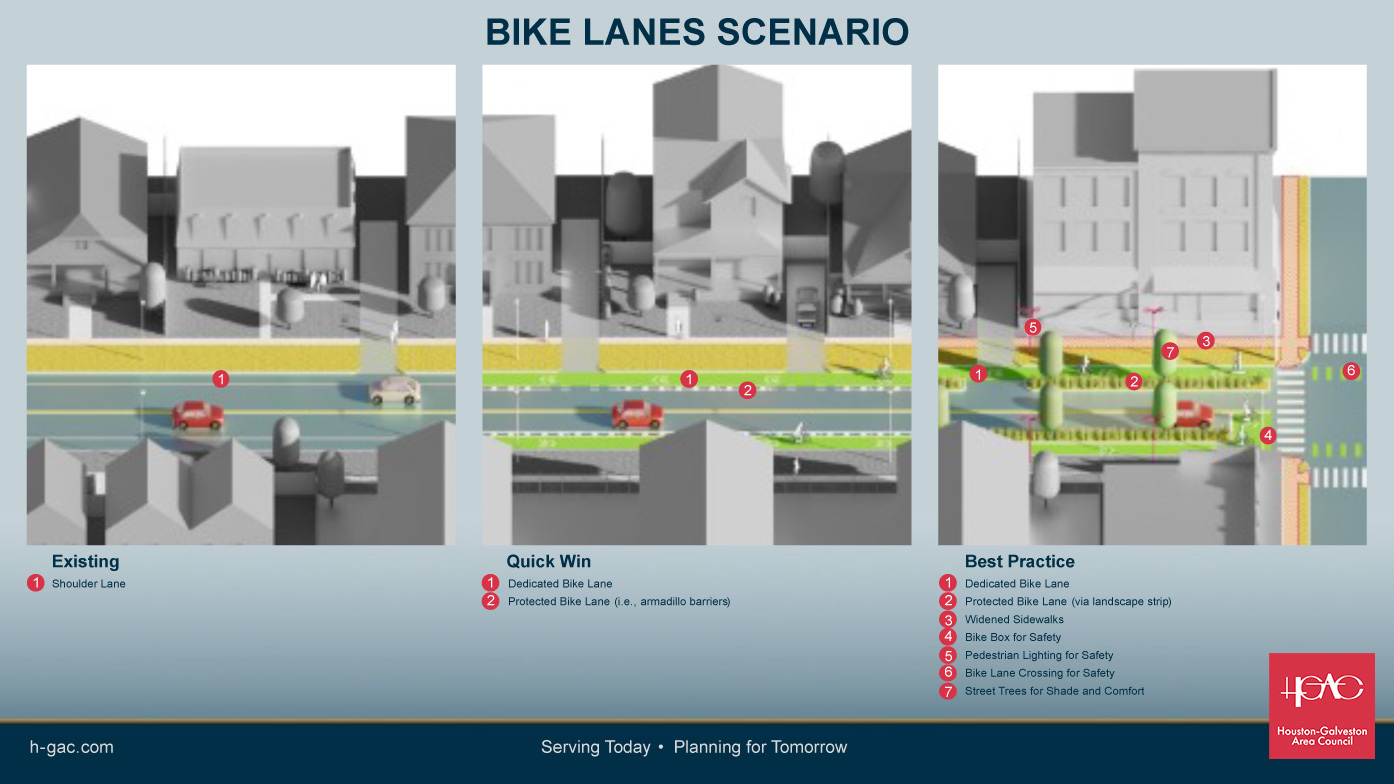On This Page
The visuals illustrate common challenges and offer project recommendations to address existing barriers, enhancing both the accessibility and impact of the Livable Centers program. They guide viewers through the progression from current conditions to quick-win projects and, ultimately, to best practices. Including quick-win options is crucial, as these projects can be implemented more swiftly, require less interagency coordination, and are cost-effective.
Local member governments are encouraged to use these graphics for their own initiatives. To request high resolution copies of the graphics, please contact Livable Centers staff.
Traffic Calming Measures
Restriping a roadway to add on-street parking and high-visibility crosswalks is an affordable, quick-to-implement solution designed to naturally calm traffic. While best practices in traffic calming can be more costly, they have been shown to effectively reduce vehicle speeds and enhance pedestrian safety.
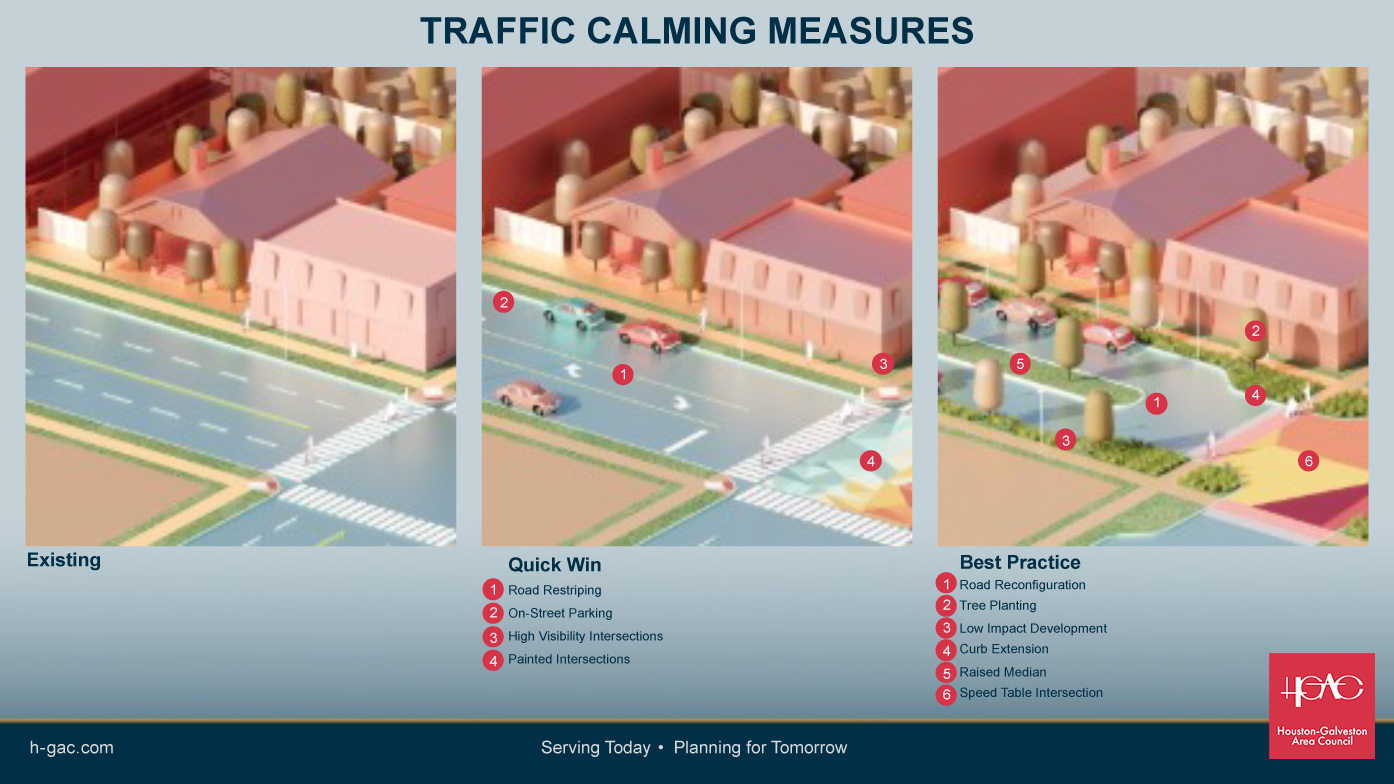
Multi-Modal Transportation
Adding more transit stops and bike parking racks is a relatively simple enhancement that supports accessibility and multimodal connectivity. The best practices graphic highlights ADA-compliant bus stop amenities, trail linkages, and barrier crossings, including options like pedestrian bridges.
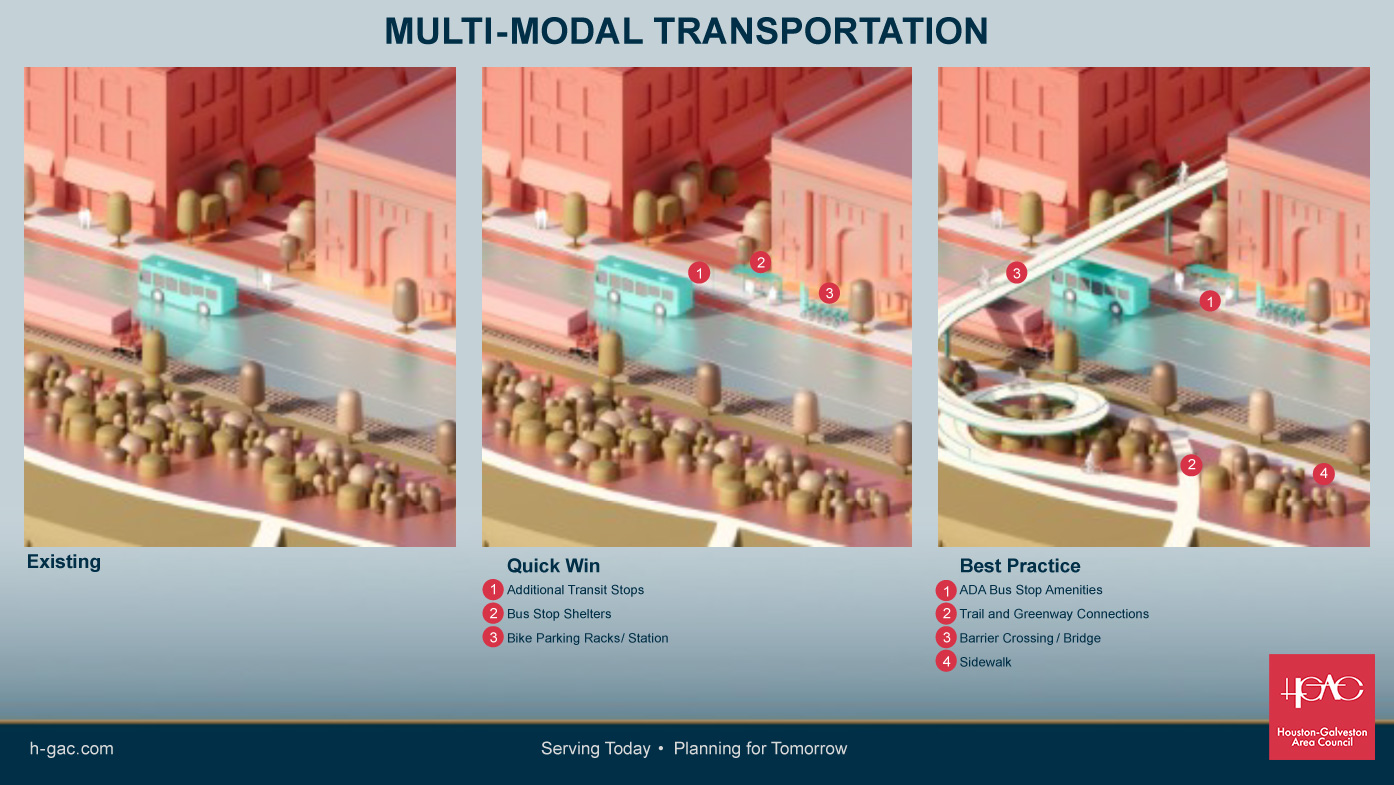
Elements of Placemaking
The next graphic highlights key elements of placemaking, which extends far beyond simple beautification. Thoughtfully designed placemaking projects can promote economic development, enhance safety, and strengthen community identity. For instance, murals and wayfinding signage, shown in the quick-win graphic, foster community pride and can encourage local events. The best practices graphic emphasizes deeper investment by making community spaces accessible and welcoming for all, while the addition of parks programming further supports community gatherings and engagement.
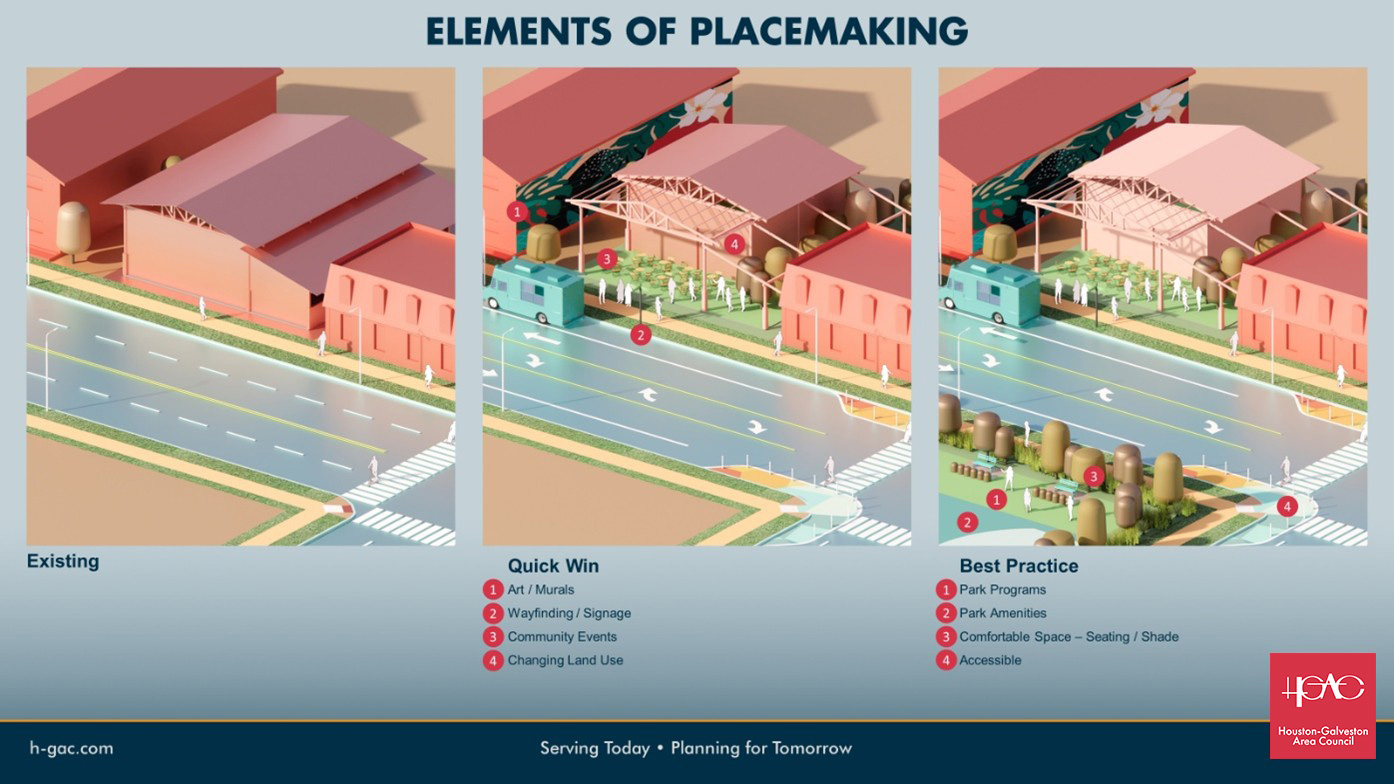
Access to Transit Scenarios
The next set of graphics illustrates three common scenarios along with recommended strategies to overcome existing barriers.
The first scenario focuses on improving access to transit. In our region, unsheltered bus stops and damaged sidewalks are frequent obstacles, limiting safe and equitable access to transit. Recommendations include creating safe pathways, adding ADA-accessible amenities, providing shaded areas, and establishing dedicated connections, ensuring that transit access is inclusive and convenient for all users.
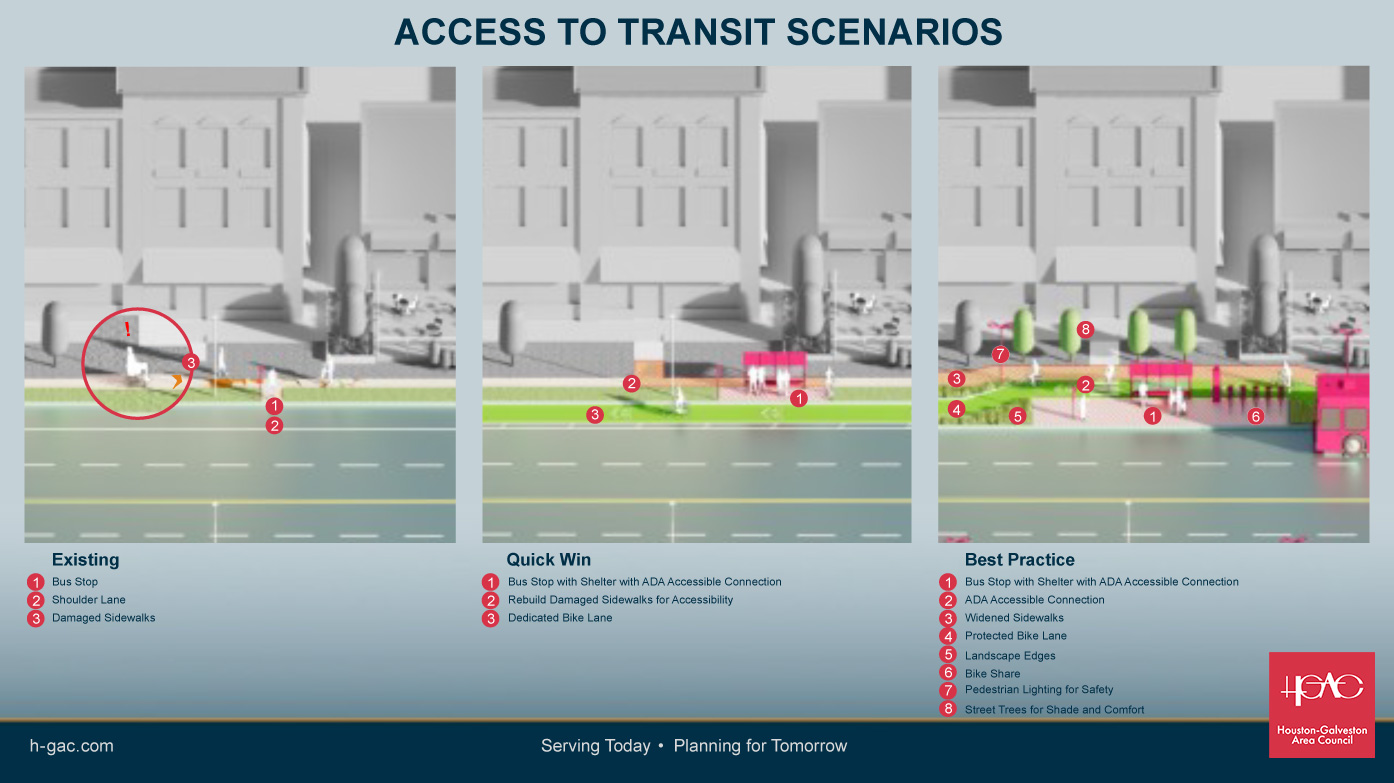
Sidewalk/Crosswalk Scenarios
The next scenario showcases the critical role of safe sidewalks and crosswalks. Disconnected sidewalk networks create significant challenges for users with varied mobility needs, making walking and rolling difficult. The first step toward greater accessibility is ensuring sidewalks are well-maintained and free from disrepair. The best practices graphic illustrates key improvements, including high-visibility crosswalks, curb extensions to shorten crossing distances, and trees to provide shade and naturally slow traffic. Together, these enhancements have been proven to increase pedestrian safety and create a more enjoyable, user-friendly experience for all.
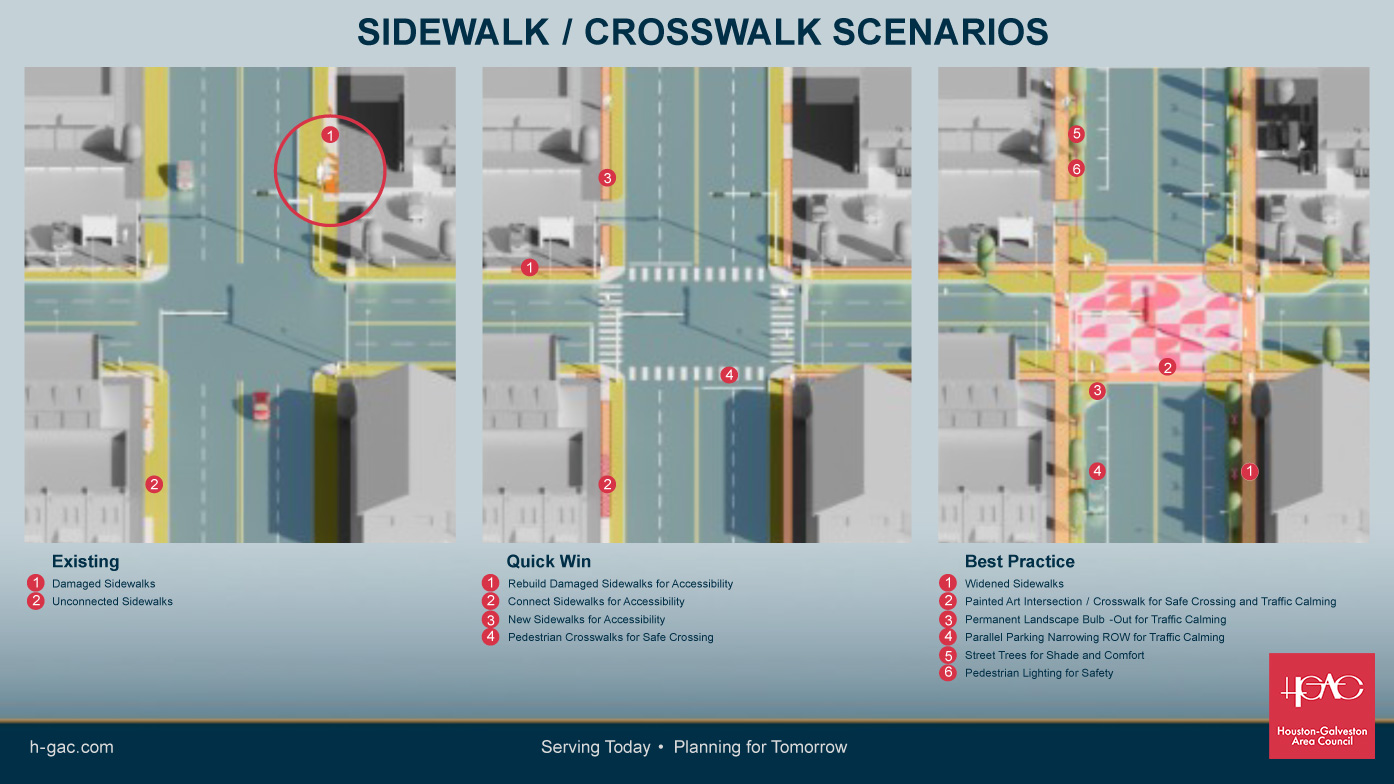
Bike Lanes Scenario
The final scenario focuses on bike lane safety. The most common approach—using “share the road” signs—often falls short in protecting cyclists. A quicker solution is to stripe dedicated bike lanes, which helps create a clear separation between bicycles and vehicular traffic. The best practices graphic goes further, illustrating landscaping buffers to completely separate bike lanes from vehicles, along with designated bike lane crossings. These strategies, along with other methods depicted in the graphic, contribute to safer, more enjoyable bike lanes for all users.
